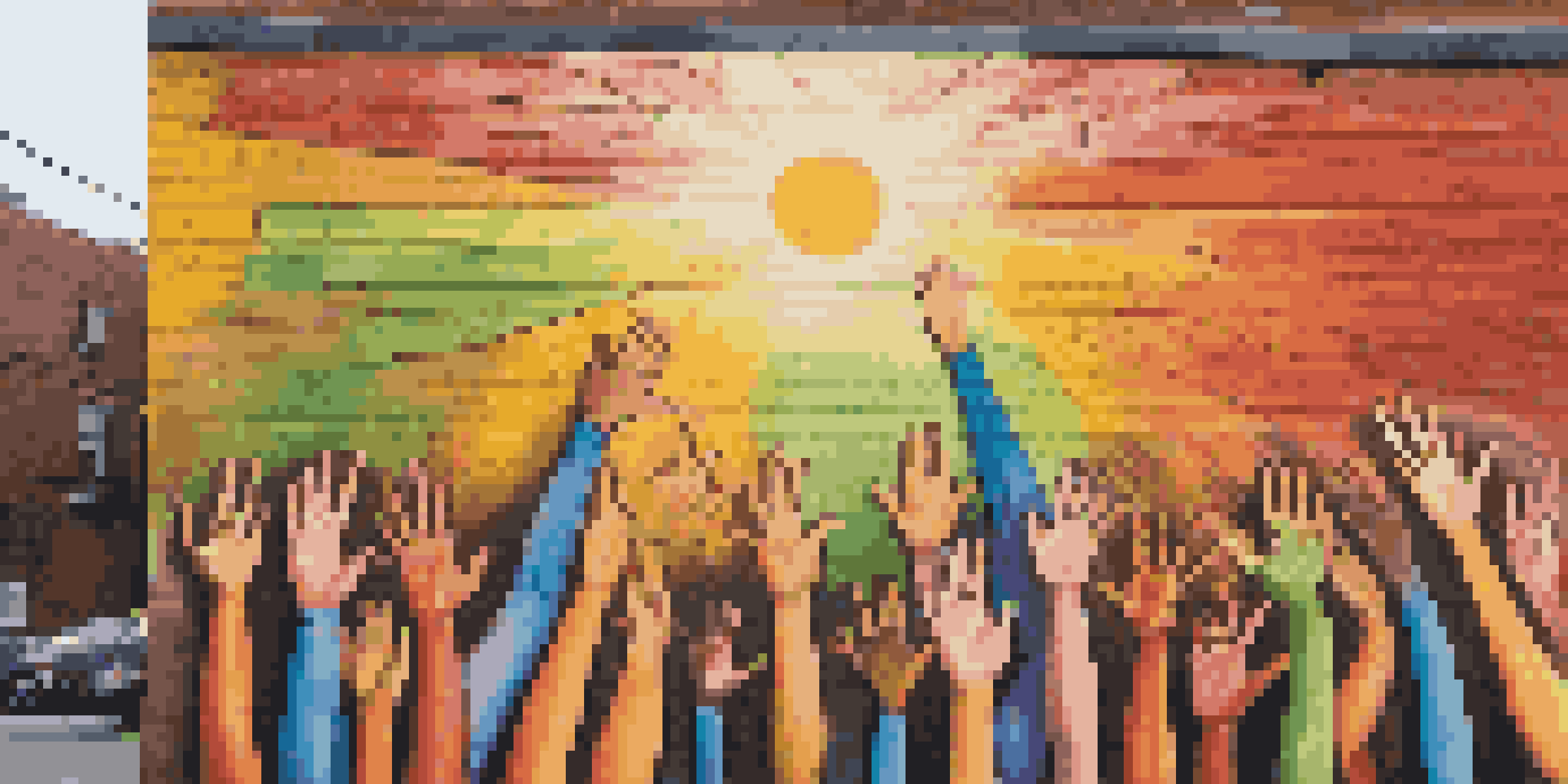Artistic Responses to Racial Injustice in the Digital Age

The Rise of Digital Activism in Art
In recent years, digital activism has flourished, transforming how art engages with social issues. Artists leverage platforms like Instagram and TikTok to share their messages far and wide, creating a sense of community around racial injustice. This shift allows for immediate feedback and interaction, breaking down barriers between creators and audiences. By harnessing the power of the internet, artists can amplify their voices and spark conversations that resonate globally.
Visual Storytelling as a Tool for Change
Visual storytelling has emerged as a powerful medium in the fight against racial injustice. Artists use illustrations, photography, and video to depict the realities of systemic racism, making complex issues more relatable. For instance, street artists often turn public spaces into canvases that challenge societal norms and provoke thought. Such art not only informs but also inspires viewers to take action, fostering a deeper understanding of the struggles faced by marginalized communities.
Digital Art Fuels Social Change
Artists are using social media to amplify messages about racial injustice, fostering community and dialogue.
The Impact of Social Media on Art and Activism
Social media has revolutionized the way art intersects with activism, allowing for rapid dissemination of artistic expressions. Hashtags like #BlackLivesMatter have become rallying cries, uniting artists and activists alike in their fight for justice. By sharing artwork that highlights racial inequalities, these platforms create a digital gallery of resistance that encourages dialogue and solidarity. This interconnectedness is vital in fostering a collective consciousness about racial issues.
Digital Art as a Reflection of Cultural Identity
Digital art serves as a canvas for expressing cultural identity and experiences of racial injustice. Through mediums like graphic design and animation, artists often reflect their heritage and confront stereotypes head-on. For example, works that draw from personal narratives can challenge perceptions and promote understanding. In this way, digital art not only celebrates diversity but also educates audiences about the complexities of racial identity.
Visual Storytelling Inspires Action
Through powerful visuals, artists depict systemic racism and inspire viewers to engage in meaningful conversations.
Documenting History Through Digital Archives
Digital archives play a crucial role in documenting the history of racial injustice through artistic lenses. Many artists create online collections that preserve the narratives of those affected by racism, ensuring their stories are not forgotten. These archives often include multimedia elements, making history accessible in engaging ways. By curating these digital spaces, artists help to shape cultural memory and contribute to ongoing conversations about justice and equality.
Collaborative Projects Amplifying Voices
Collaboration among artists, activists, and communities has become a hallmark of artistic responses to racial injustice. Joint projects can harness the strengths of diverse voices, creating a richer narrative around social issues. For instance, community murals often involve local residents in the creative process, fostering a sense of ownership and pride. These collaborative efforts not only amplify individual voices but also build bridges between different cultural narratives.
Technology Enhances Artistic Activism
Advancements like VR and AR are creating immersive experiences that deepen understanding of racial issues.
The Role of Technology in Artistic Expression
Advancements in technology have opened new avenues for artistic expression in the context of racial justice. Virtual reality (VR) and augmented reality (AR) are being utilized to create immersive experiences that educate users about racial issues. These technologies can transport audiences into the shoes of those who have faced injustice, fostering empathy and understanding. As technology continues to evolve, artists will likely find innovative ways to integrate it into their activism.
Future Directions for Artistic Activism
Looking ahead, the future of artistic activism in the digital age is filled with potential. As artists continue to experiment with new technologies and platforms, the conversation around racial injustice will likely evolve. This dynamism can lead to even more powerful artistic expressions that resonate with younger generations. Ultimately, the intersection of art and activism will remain a vital force in shaping societal attitudes toward racial equality and justice.